THE 1998 ‘WILDERNESS MENTORING CONFERENCE’
NOTE: Please consider leaving a comment after you’ve read this story. Scroll to the bottom of this page to find the comments section… Thanks. JS
On Memorial Day weekend, 1998 —twenty-five years ago — environmental activists from across the West and the country gathered at a plush resort in the Arizona desert to discuss the future of wilderness. They weren’t there to talk about its intrinsic values; they were there to talk politics. For years, the environmental community had pushed the idea of congressionally designated wilderness, but had made little progress. Now leaders of the movement, frustrated by their lack of success, proposed new strategies to accomplish their goals. What came out of that gathering forever changed the heart and soul of that movement. As environmentalists moved to implement these ideas, the meeting itself and the conclusions they reached, went practically unnoticed. In Moab, where this publication was still in its first decade, I could see the changes, years before I learned about the Rex Ranch conference, and discovered the root cause.

Mark Twain once said, “If you’re young and conservative, you haven’t got a heart.” But he added, “If you’re old and liberal, you haven’t got a brain.” When I first read that, I was 25 and had no idea what he was talking about. And I’m still not sure I agree completely. But for sure, I can acknowledge that many of my most deeply held beliefs were molded by emotion and by the inflexible, intolerant self-righteousness that only young people can be molded by.
And so, when I was in my early twenties, I saw everything through a black and white lens; there was no room in my head for nuance, or gray zones, or self-reflection. I became the kind of knee-jerk environmentalist that most “anti-environmentalists” love to hate. I joined all the right organizations, wholeheartedly supported every cause and walked in lock-step with my enviro pals.
But by the time I started The Zephyr, almost 35 years ago, I began to realize that my opinions were set more deeply in concrete than they had the right to be; in the first issue of this publication, I stated my intent to offer all sides of the debate– to provide a broad spectrum of ideas. A forum for differing points of view. . But while I think I stayed true to that pledge, it was always clear where my loyalties were. I gave the local environmental group almost unlimited space and free ads in The Zephyr to present their points of view. They, in turn, promoted my little rag as “the greatest newspaper in the world.” I was quite flattered. Many thought The Zephyr was the print arm of the Southern Utah Wilderness Alliance.
Then in the late 90s, it all started to feel different to me. As the tourist boom/urbanization of Moab and the Rural West exploded, I began to doubt the purity of our cause. More than two decades ago, I decided to express those concerns, as “Industrial Tourism” and the “Amenities Economy” began to lay waste to the very land we sought to preserve. I thought it was time we looked in the mirror. I dedicated the April 2001 issue to that very topic; it was the cover story. I expected a healthy discussion, with input from all sides, and with the goal of finding a workable strategy to move forward. . But instead, and to my surprise, I encountered deep resistance. In fact, it was worse than that. None of my green friends wanted to talk about these kinds of impacts. When I pursued the matter, they thought it was heresy—the discomfort turned to anger and then loathing. I went from ally to enemy in a matter of a couple years.
And so, my lockstep days were over. Since then, the “wilderness” issue has devolved into a political and economic debacle. It has been fueled by massive amounts of money and influenced by powerful men and women who, on first sight. might have seemed like odd allies to the wilderness cause. For me, the moral component in the wilderness fight was lost.
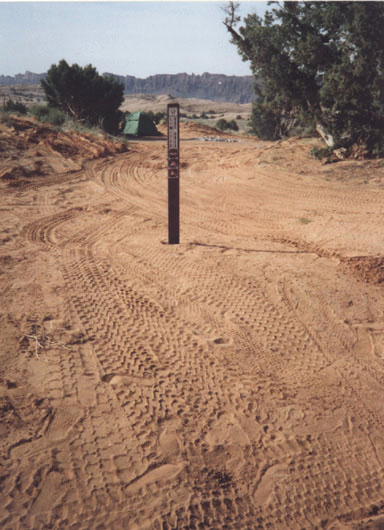
But why? What changed? At the outset, I had been more an idealist than a realist and I was never equipped to play the role of politician/dealmaker. Still, both then and now, the effort to preserve dwindling wilderness lands was always supposed to be, in my heart and soul at least, a moral and ethical issue. If there was a political/economic component to be exploited, I never felt it should be the driving force behind “the Cause.”
As we approached the Millennium, the changes in the wilderness strategy was different –palpable — but I couldn’t pinpoint its origins — if there was one. But from where I stood, the “crusade” to save wilderness had gradually become a sales pitch. In Utah, the economic component of wilderness became a prominent, if not the defining reason for passing a wilderness bill. I remember reading and being troubled by a cover story in the SUWA magazine —they called it “Wilderness Economics 101,” and praised tourism as the ultimate “clean solution” to the rural west’s economic issues.
Suddenly, the idea of wilderness in its purest form, and the legislative process to create wilderness diverged. I found myself on the outside, looking into a “movement” that I no longer recognized. It was never the same for me again and I couldn’t understand where they (or I) had gone astray. I noticed that SUWA and other groups were trying to build coalitions with tourist and recreation-based businesses. Lists of business supporters of the Red Rock Wilderness Bill appeared frequently. Even when one business owner started running illegal backcountry, off trail tours in Arches National Park, none of the local green groups could muster an objection. I aske questions but I couldn’t get a straight answer. The tourism/recreation industry began to take off in southeast Utah. I was flummoxed.
But then one evening, an unexpected discovery popped up on my computer screen. As much and as often as I loathe the internet, the medium does have its moments. Despite its overarching banality, it also has the potential to provide information that might otherwise be buried by the passage of time and the lack of access to the long-passed facts.
I was Googling—just typing in names and organizations and places–to see what I might find. I typed in “wilderness” and “marketing.” What appeared on my screen was a complete surprise to me. What it revealed to me answered my years old question — What in the hell is happening?
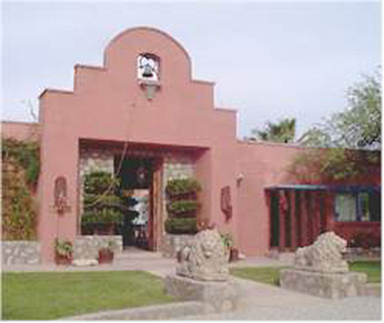
Historic Rex Ranch, just south of Tucson, Arizona, was built before the Gadsden Purchase of 1848, in the style unique to this area. Thick, natural adobe walls—some over 170 years old—form both the natural insulation and the spiritual core of this storied property. The ranch takes its name from Rex Hamaker, a Texan who bought it in the 1930s and developed the 50-acre ranch into a gracious, hacienda-style compound with courtyards and fountains.
And although the history and architecture of the ranch are unique, we love its spiritual energy. We bought it in 2017 to reimagine it as a wellness-focused petite resort. Sitting at the edge of the Coronado National Forest in the foothills of the Santa Rita Mountains, surrounded by mesquite trees on this magical piece of history, there’s no better place to connect with the land and your own spirit. We’re renewing and reimagining Rex Ranch as Casa Doa, and look forward to welcoming you in 2025.
https://www.auricroad.com/petite-resorts/rex-ranch/
I had stumbled upon a website called “The Wilderness Mentoring Conference of 1998.” The gathering had been assembled by a group of self-proclaimed “mentors,” professional environmentalists, active at the time, in organizations that reached from Washington DC to Alaska. This relative handful of New Environmentalists was frustrated by the movement’s lack of progress in pushing and passing wilderness legislation across the country.
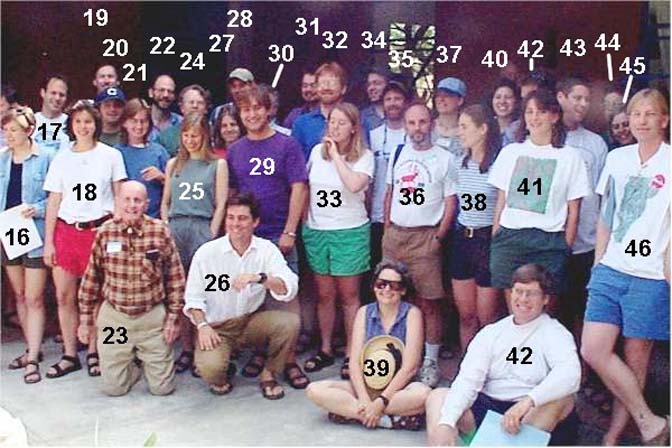
1-Maggie Fox, 2-Bart Koehler, 3-Marc Wheeler, 4-Todd Tucci, 5-John Leary, 6-Jill Duryee, 7-Amy Schlachtenhaufen, 8-? , 9-Bethanie Walder, 10-Cindy Shogan, 11-Wendy Whitehorn, 12-Andy Holdsworth, 13-Tom Uniack, 14-Vic Simarano, 15-Mike Leahy, 16-Amelia Jenkins, 17-Adam Kolton, 18-Courtney Cuff, 19-Jay Nelson, 20-Trevor Fitzgibbon, 21-Anne Martin, 22-Russ Shay, 23-Ernie Dickerman, 24-Brooks Yeager, 25-Marilyn Twitchell, 26-Tom Price, 27-Kristin DeBoer, 28-Dan Smuts, 29-Scott Anaya, 30-Doug Scott, 31-Michael Carroll, 32-Steve Kallick, 33-Sara Callahan, 34-David Ellenberger, 35-Tim Bristol, 36-Lenny Kohm, 37-Jessica Hamilton, 38-Baret Pinyoun, 39-Debbie Sease, 40-Jennnifer Lyons, 41-Diana Rhoades, 42-Pat Higgins, 43-John Adams, 44-Katie Deuel , 45-Mary Frances Repko, 46-Jeremy Sheaffer, 47-Jeff Geller, 48-Melyssa Watkins, 49-Brian O’Donnell, 50-, 51-Kelly Burke, 52-Pete Kolbenschlag, 53-Tim Mahoney, 54-Kim Crumbo (behind post), 55-Mike Matz
Not pictured: Michael Kellett, Jack Humphrey, John McComb, Brant Calkin, Caroline Byrd, Kathleen Fitzgerald
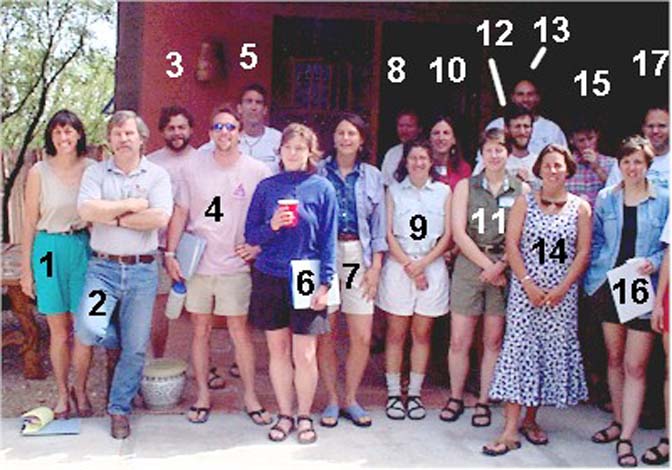
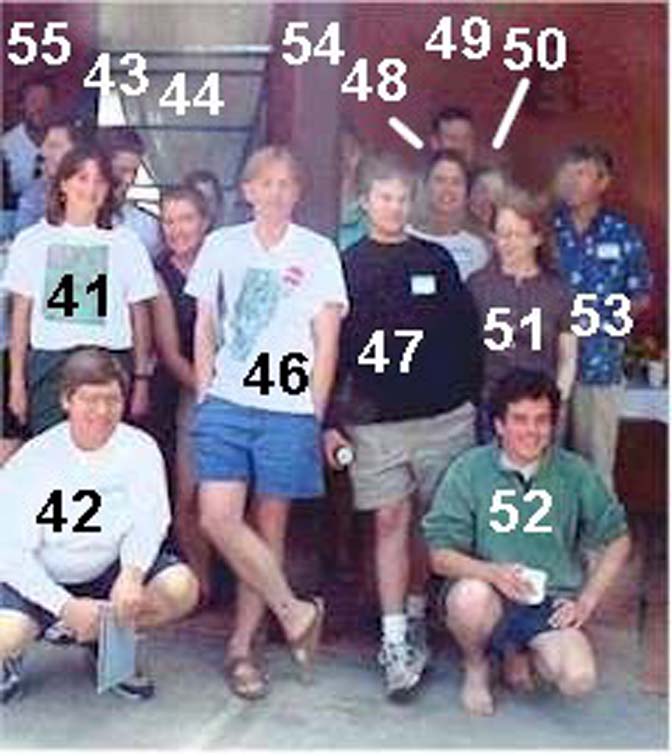
And so, On Memorial Day Weekend in 1998, according to the document that summarizes this event, “sixty-three people active in (or suffering a tenuous retirement from) wilderness advocacy met at the Rex Ranch in Amado, Arizona, for the first Wilderness Mentoring Conference.”
It included participants from national and regional environmental organizations coast-to-coast, including The Sierra Club, Montana Wilderness Association, Alliance for the Wild Rockies, Friends of Nevada Wilderness, Southeast Alaska Conservation Council, and National Audubon Society.
And it included representatives of the Southern Utah Wilderness Alliance (SUWA), including its then-Executive Director, Mike Matz. Matz would also preside over the conference as one of its mentors.
SEE COMPLETE LIST OF PARTICIPANTS
https://web.archive.org/web/20160303101800/http://www.jmccomb.com/mentor/participants.htm
The report of the gathering–the post mortem—was called “Building a Successful Wilderness Campaign: Lessons from the 1998 Wilderness Mentoring Conference.” It brought together, the introduction explained, “the last generation of ‘closers,’ those who know how to take an idea and run with it all the way to the president’s desk, with a new generation of eager, thoughtful wilderness advocates. The younger generation was encouraged to think critically and to identify strategies, tools, and tactics for developing and leading successful wilderness campaigns.”
THE WILDERNESS MENTORING CONFERENCE AT WORK
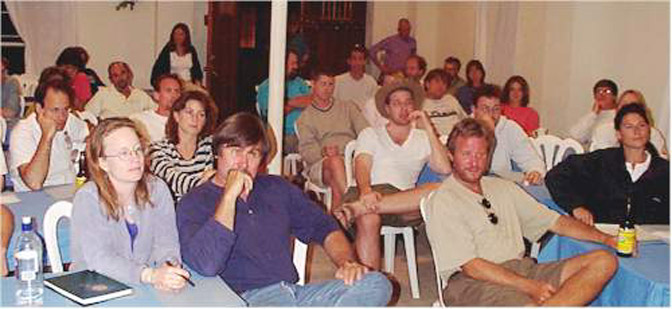
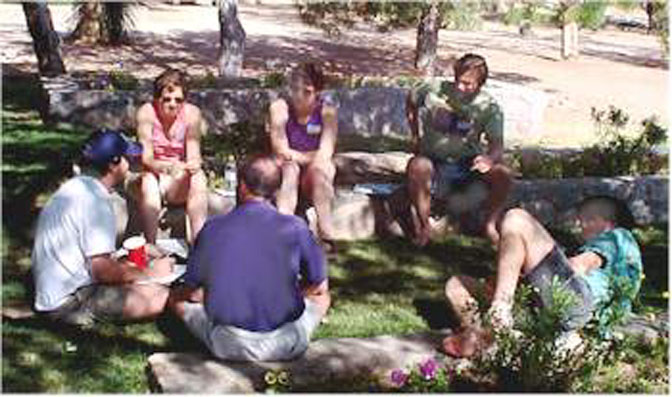
A prominently displayed quote by Michael Carroll, later of The Wilderness Society, established the tone and direction of all that would come later:
“Car companies and makers of sports drinks use wilderness to sell their products. We have to market wilderness as a product people want to have.”
That, in its most succinct essence, was the theme of the conference. While the organizers of the event paid tribute to the wilderness activists who had come before, clearly the purpose of the meeting was to propose a new approach.
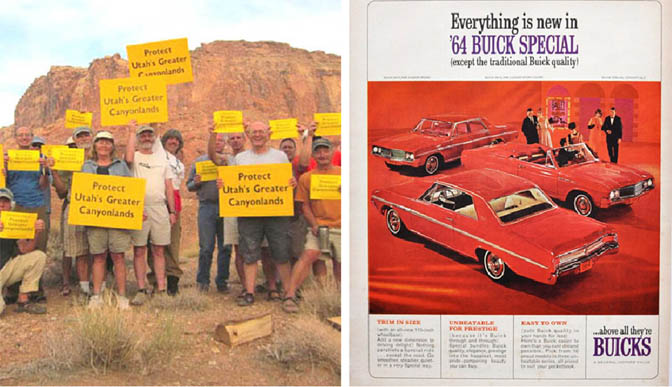
“Although it is important to pioneer new wilderness strategies,” the report explained almost as an afterthought, “we must do so with knowledge of what has come before.” With that token nod to the “importance of history” and to the “philosophical and political contexts” of the wilderness movement, the conference explored the new territories of salesmanship, marketing and media manipulation to win the legislative wilderness battle. One might think you were being taught how to sell a new Buick.
The conference offered a plethora of ideas. Among them:
Hire a professional consultant.
Build a portfolio that contains your media clips.
Create relationships with reporters. Don’t wait for reporters to come to you. Use smart lobbying skills when you speak to them If you can, give them tips about good stories elsewhere. They’ll appreciate it, remember you, and come back to you.
Widen your availability. Don’t just aim for newspaper coverage.
Talk to local radio show hosts and see if they can interview you.
Videotape your congressional co-sponsor.
Use “Presponse.” Call the media before you stage an event.
Hold a press conference. Anyone or any group can call a press conference. The trick is to have a hook that will attract the media.
NOTE: You can view the entire “Mentoring Conference Report. At one point the site vanished but my former wife, Tonya Morton, was able to use her remarkable skills to find a cached copy.
https://web.archive.org/web/20160303112636/http://www.jmccomb.com/mentor/
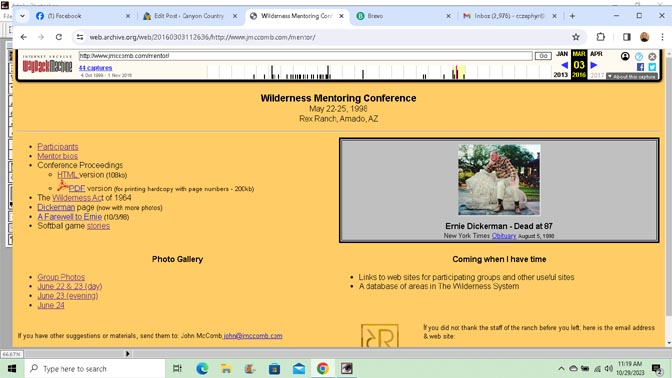
(I also copied most of the report to a Zephyr link, on the off chance that the story was deleted at a later date. Here is the link to the transcribed story…)
The conference explored the differences between a “defensive” and “offensive” campaign and it examined the fine art of lobbying both the executive and legislative branches of government. And most importantly, it emphasized: “Understand and use the media.” They could not have put a finer or more meticulous point on it…
“When you are learning to cook up a campaign, media are an essential utensil. In addition to using media strategically, you need to know how to market your cause effectively once there.” Among its more important points:
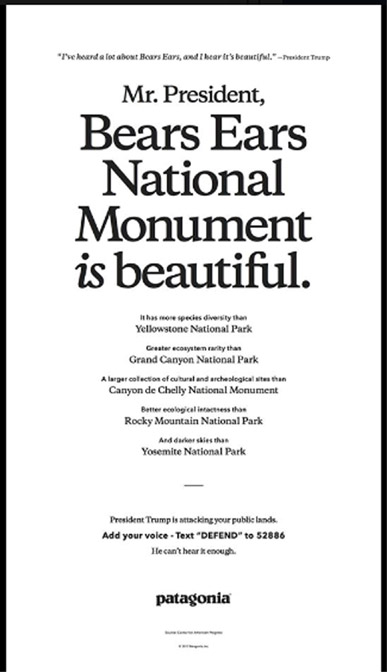
* Get people’s attention. Use an unexpected messenger to get your message across. Do something unexpected and unique. Gimmicks can be very effective for capturing people’s attention…
* Use a catchy slogan. Use alliteration or a clever rhyme to make a slogan stick in people’s head. For example, many years ago, the line, “Don’t be a litterbug,” made people more aware of their littering habits.
* Appeal to people’s interests. Use marketing to let people know how a certain initiative will help them in particular. For example, get families’ attention by talking about their children’s future.
* Deliver your message using an unexpected source. Increase your credibility by asking a hunter or rancher to deliver a message of support to Congress or the media
* Ask experts to endorse your “product.” Ask a scientist, a geologist, or any pertinent expert to help market your campaign. Maybe they will let you quote them or refer to them in an article or ad.
* Develop a spokesperson. Get people used to a recognizable, quotable, and believable spokesperson. If Joe Movie Star thinks saving the wilderness is a good idea and is vocal about it, his support might be enough to convince some people to back you. Who is a local hero in your city or town? Might he or she be willing to support your cause?
* Use other products to sell wilderness. Note the byproducts of protected wilderness, such as clean air, clean water, and pristine places to visit and enjoy.
* Contrast real wilderness with fake wilderness. Show how much better the real thing is than Disney or cyberspace, for example.
* Take back your leaders’ quotes. Many companies that don’t seem to have the best interests of wilderness in mind, such as ATV manufacturers, often cleverly use quotes of well-known wilderness advocates to sell their products. Use quotes (e.g., John Muir’s) in a context that supports saving wilderness.
* Make it funny. People like humor. Make good-natured jokes about anti-wilderness initiatives. People also like the possibility of good times. Show people having fun in the wilderness.
This was the Rosetta Stone. Until I stumbled upon the web site, I had never heard of the conference; nor did I know that my Utah friends had participated in it. Nor did I know that SUWA’s executive director was one of its mentors. This is the moment where my friends in the wilderness movement in Utah took a sudden turn in a direction I had not even remotely imagined possible. The ‘why’ part had been answered.
THE MENTORING CONFERENCE of 1998— AT PLAY
NOTE: These photos were found on an ancient website; they were originally posted in 1998. At one point the link vanished but we were able to find a cached copy.
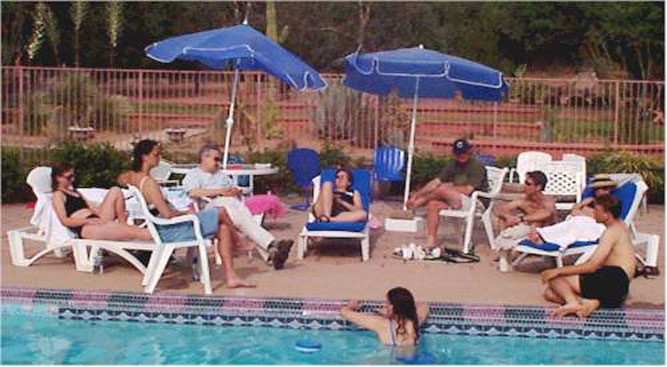
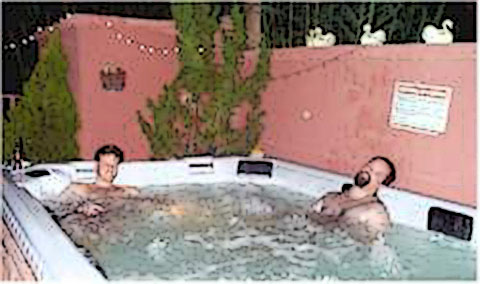
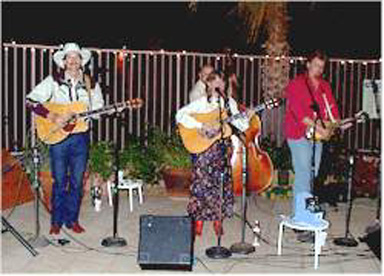
“Gimmicks…Catchy slogans…ask a rancher to support you…get Joe movie star as a spokesman…Cleverly quote John Muir…Ask experts to endorse your ‘product.’…Show people having fun in the wilderness.”
It all came to pass.
Particularly ironic was the mentors’ admonition, “Contrast real wilderness with fake wilderness. Show how much better the real thing is than Disney or cyberspace.”
Since this was written, many of us have lamented the Disneyfication of wilderness. What better example than Moab’s latest incarnation as the overhyped “Adventure Capital of the World, home of swing lines and zip lines and slack lines and every adrenalin-fueled recreational experience imaginable. The Mentors must be proud.
But what this conference created and what their report reveals is that, not only did the mentor gathering give its collective blessing to an all-out Disneyfication of Wilderness, its embrace of the strategies set forth in 1998 established the Disneyfication of the wilderness PROCESS as well.
This is when and where the heart and soul of the wilderness movement died.
To put together an event like the Wilderness Mentoring Conference would have been an expensive proposition, even in 1998, especially at Rex Ranch Resort and Spa, in Amado, Arizona (south of Tucson). Funding the travel costs of 63 people from around the country should have been a daunting task. But the event had plenty of backing from some very deep pockets. REI, (Recreational Equipment, Inc.)( which had recently put future Interior Secretary Sally Jewell on its board of directors, was a contributor. So were two mega-wealthy board members from the Southern Utah Wilderness Alliance—Bert Fingerhut and Hansjorg Wyss.
At the same time Wyss and Fingerhut were engineering a dramatic shift in SUWA’s wilderness strategy, it was injecting millions of dollars into SUWA’s coffers, turning it from the bare-bones grassroots organization it had been, into a cash-flushed “business” with brand new offices and a million dollar payroll.

That was a quarter century ago. The “new leaders” of the mainstream environmental movement were sure that the passage of the Red Rock Wilderness Bill was just around the corner, but so far, all that cash and all that flash has not served them well. A massive 10 million acre wilderness bill seems no closer to passage than it did 20 years ago.
Instead, whether it was their active participation and partnership with some of the richest and most powerful industrialists and financiers and private equity gurus on the planet, or their more recent ties to the recreation industry, mainstream environmentalists became willing players in the urbanization of the rural west; and threatened to turn all of it into the Disneyland that they themselves once feared. For me, it has been one of the most shocking and troubling examples of integrity gone bad, and good intentions soiled, that I’ve ever seen.
Many of the billionaires I mentioned served and still sit on the boards of many environmental organizations. Even after a couple of them went to prison for securities fraud in 2007, they served light terms and when released, at least one of them, Bert Fingerhut, returned to his duties as a Grand Canyon Trust board member…and its legal advisor.
*****
For years, I was unaware of the Mentoring Conference. My efforts to understand the change in strategy went unanswered by the executive directors and even lower level staffers, who failed to see a problem with any of this. In 2007, I wrote an essay for Writers on the Range called “SUWA Can You Spare a Dime.” It appeared in High Country News and was syndicated to numerous daily and weekly periodicals across the West. I noted that at the time, SUWA had net assets of over $5 million. And while I acknowledged their aggressive watchdog role keeping an eye on the extractive industries and OHV abuse, they seemed to spend next to nothing on the impacts of tourism and recreation.
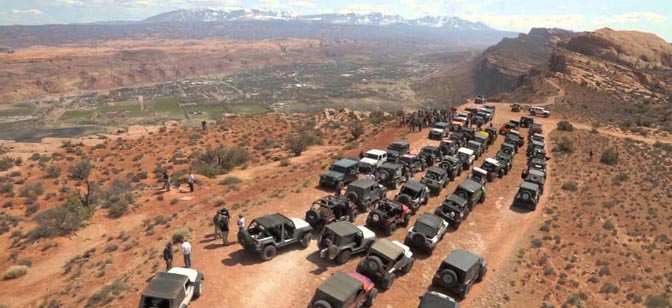
“And while I noted their aggressive watchdog role keeping an eye on the extractive industries and OHV abuse, they seemed to spend next to nothing on the impacts of tourism and recreation.”
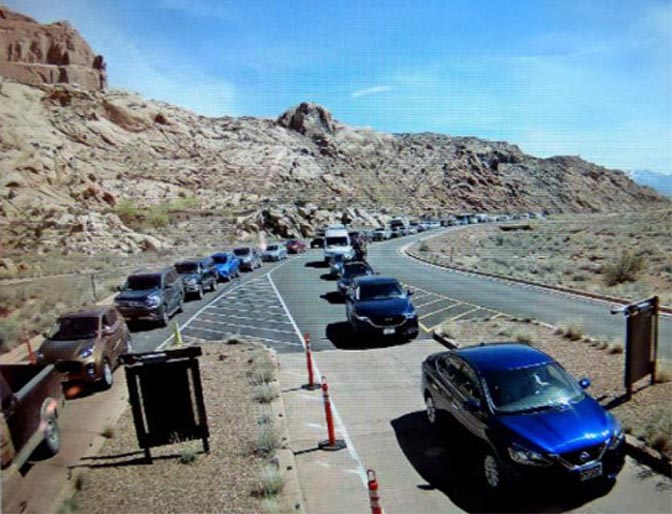
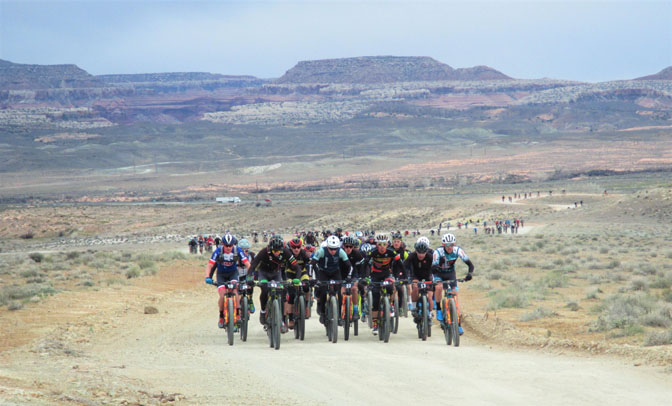
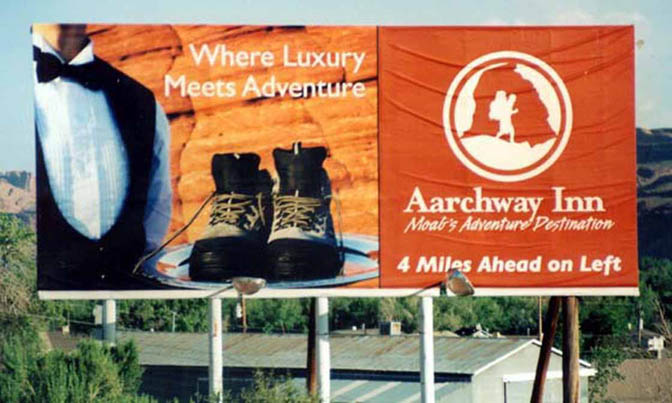
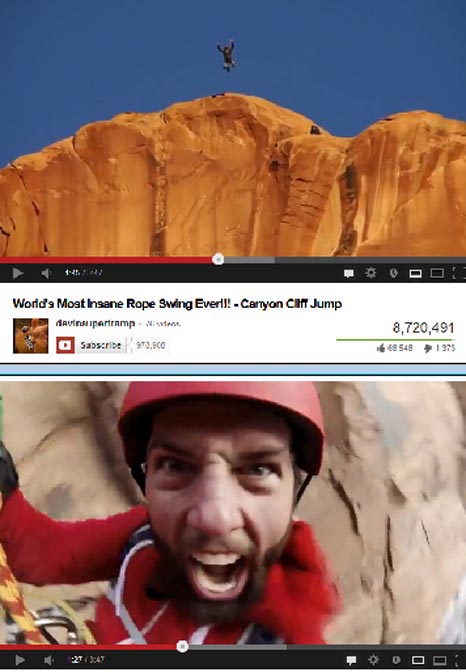
When the story ran in the Salt Lake Tribune, SUWA’s executive director, Scott Groene, demanded rebuttal space from Betsy Marston, the Writers on the Range editor. But when it arrived, she found the article so steeped in anger and vitriol that she asked Groene to remove them; she advised Groene to re-write his essay, without the nasty stuff, and re-submit. But he never did. Instead, he found a sympathetic editor at the Salt Lake Tribune who would print the story “as is.” It was a doozey. In part, Groene wrote:
“Part of a desert country’s magic is that it nourishes eccentricity,” Groene explained. ” Jim is part of that, our own Barney Fife. He’s worth having around though, even if we have to clean up after him now and again. “Typically enough, Jim’s rant says less about SUWA than about Jim’s own curious little world. As its only resident, he’s in charge. He gets not only his own opinion but his own facts.”
The Tribune permitted me a few lines to respond in its “Letters” section. “Now that I have had the gall,” I wrote, “to disagree with some of SUWA’s strategies and to suggest that it might want to share even a fraction of its $5 million bankroll with other enviro groups, I appear to be in the doghouse. And with Barney Fife no less.” More importantly, I recalled the words of Edward R. Murrow, who wrote, “ ‘We must not confuse dissent with disloyalty. When the loyal opposition dies, I think the soul of America dies with it.”
But there was no comment from SUWA. Not then and not now.
*****
Recently I looked up SUWA’s tax returns for the most recent year available, 2021. SUWA had called its $5 million largess a “rainy day fund.” That was in 2006. Fifteen years later, their assets have jumped to $25,303,976. In fact their net assets increased by almost $6 million, from just the previous year— more than their total assets in 2006.
(For comparison, The Zephyr had a net profit of less than $7000 last year…you sure can’t say I’m in this for the money.)
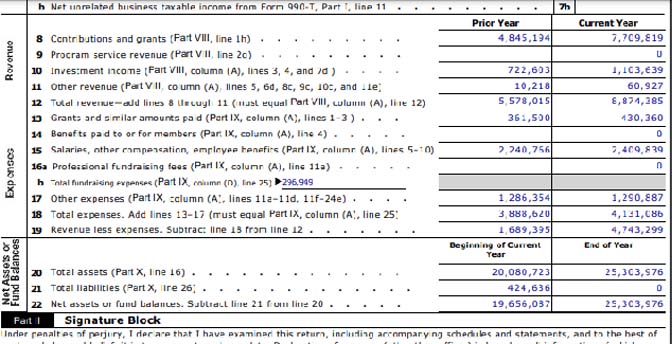
Most environmental groups continue to bewilder me as I get older and start looking for facts to support ideas. While these groups have never seen an oil and gas project, or a uranium mine that they didn’t hate and want to bury, they enthusiastically support renewable energy as the answer to climate change concerns. They love solar and wind, for example, and they love electric cars. But at the same time, these same organizations will oppose and try to derail any project to extract the rare earth minerals that are absolutely necessary for renewables to work. Cobalt. Lithium. Even copper is needed, in massive quantities, to generate the kind of renewable energy our 21st century consumer society demands.
To put a finer point on it, in order for the amenities/tourism economy to work, consumption needs to keep growing, at a rate that we all know is, sooner or later, unsustainable. But you’ll never ever hear the conservation movement talk about such blasphemies. If I can fall back on my favorite Wendell Berry quote, many years ago, he admonished environmentalists. He wrote:
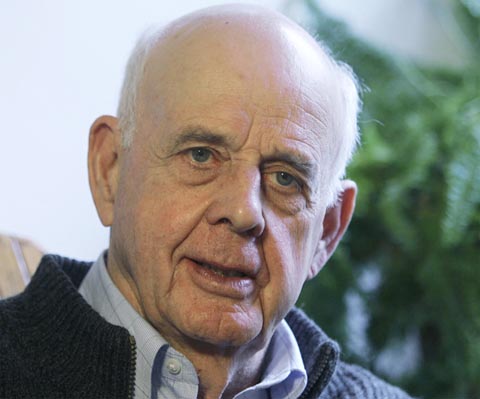
“…this is what is wrong with the conservation movement. It has a clear conscience….To the conservation movement, it is only production that causes environmental degradation; the consumption that supports the production is rarely acknowledged to be at fault. The ideal of the run-of-the-mill conservationist is to impose restraints upon production without limiting consumption or burdening the consciences of consumers.”
Perfect.
Now, as the year 2023 comes to a close, we need to ask ourselves, have the efforts of these environmental organizations, flush with cash and eager to mold the West in its preferred image, done anything substantial to “protect” the wilderness? Just look around you. Look at the rural west now, compared to even a decade ago. I’ve come to realize that “extractive industries” aren’t confined to coal and oil and uranium. The New West, to me at least, is extracting its very soul.
What do you think?
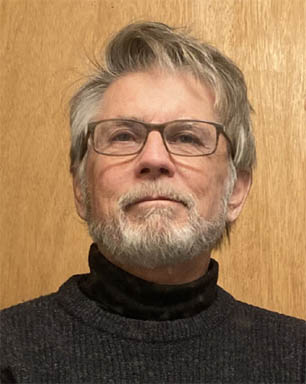
Jim Stiles is the publisher and editor of The Zephyr. Still “hopelessly clinging to the past since 1989.” Though he spent 40 years living in the canyon country of southeast Utah, Stiles now resides with two cats, Rambo & Rascal, on the Great Plains. Coldwater, Kansas is a tiny farm and ranch community, where there are no tourists.
He can be reached via facebook. Messenger, or by email: cczephyr@gmail.com
TO COMMENT ON THIS STORY, PLEASE SCROLL TO THE BOTTOM OF THIS PAGE

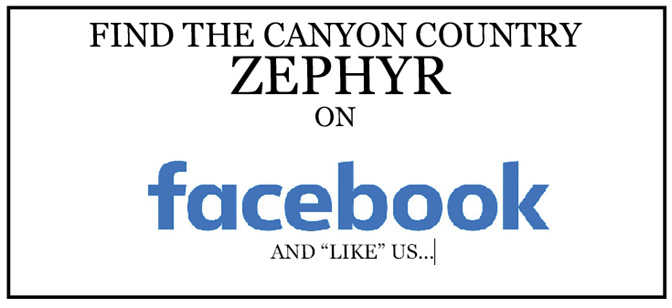
And I encourage you to “like” & “share” individual posts.
Why they can’t just leave the site alone is beyond me,
but that’s what Facebook likes to do.
ALSO NOTE: I post old photographs and stories from our 25 year old archives every day. Pictures from Herb Ringer, Edna Fridley, Charles Kreischer.. even a few old photos from my Dad. So if you want to stay caught up on our historic photo collections,
be sure to “follow” us on Facebook…Thanks…Jim
https://www.facebook.com/FansoftheCanyonCountryZephyr/
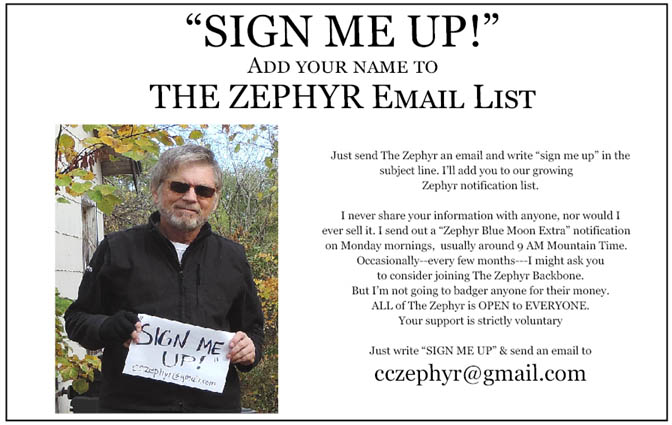
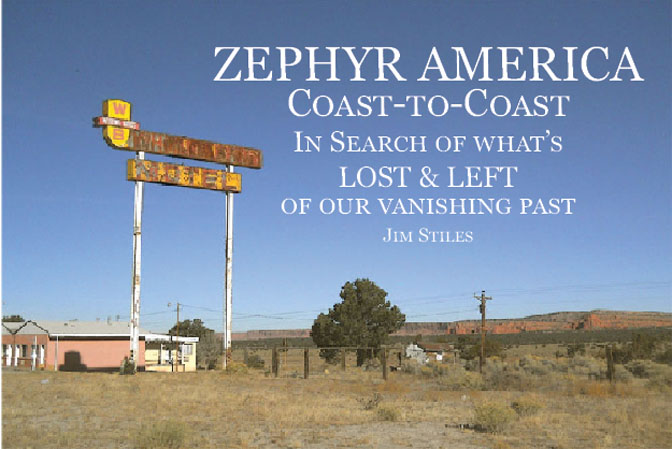
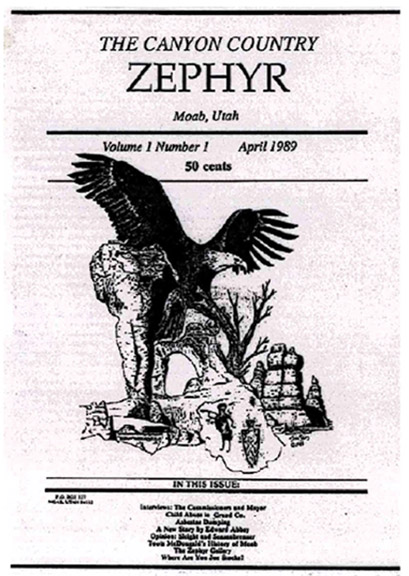
Signed copies
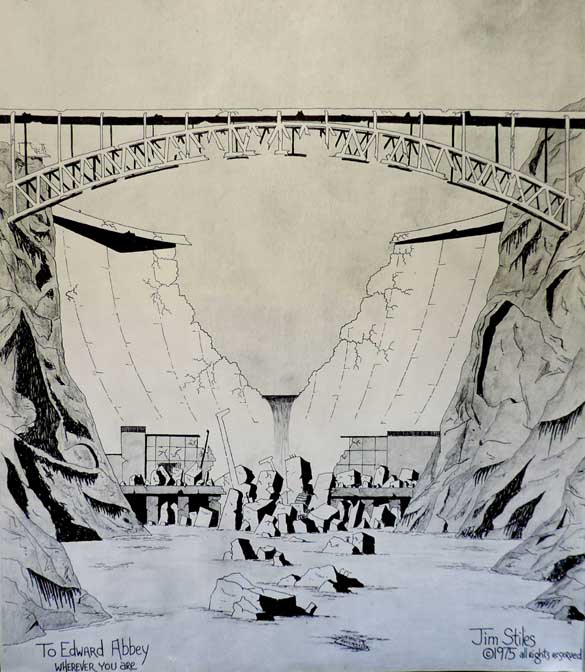
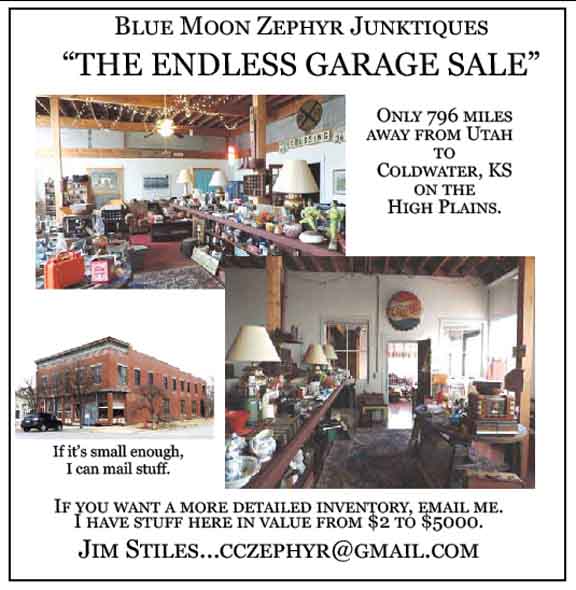
https://www.facebook.com/profile.php?id=100086441524150
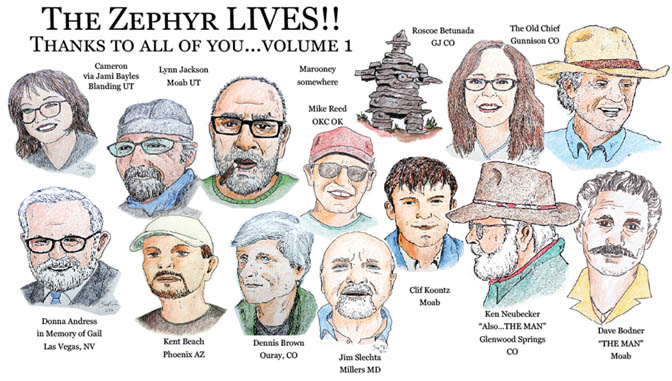

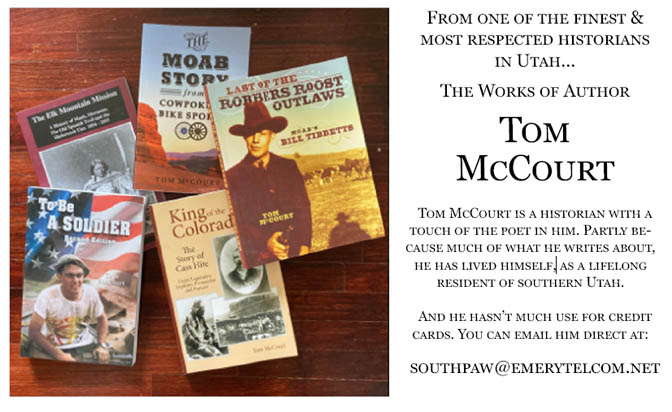

And check out this post about Mazza & our friend Ali Sabbah,
and the greatest of culinary honors:
https://www.saltlakemagazine.com/mazza-salt-lake-city/
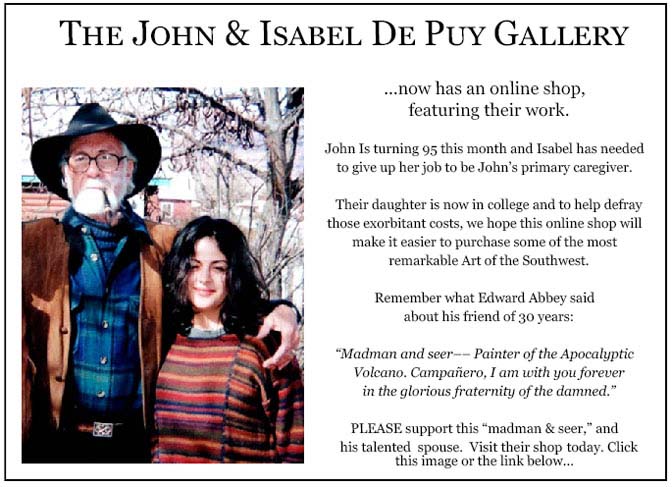
More than six years ago, The Zephyr, me & four other individuals were sued for defamation by the former Moab City Manager. Faced with mounting legal bills, my dear friends John and Isabel De Puy donated one of John’s paintings to be auctioned.
ALL the proceeds went to our defense.
Thanks to them, our bills were almost completely covered.
Now I’d like to return the favor. Check out the link below and their online shop… JS
https://www.depuygallery.com/shop.html

https://www.canyoncountryzephyr.com/
.

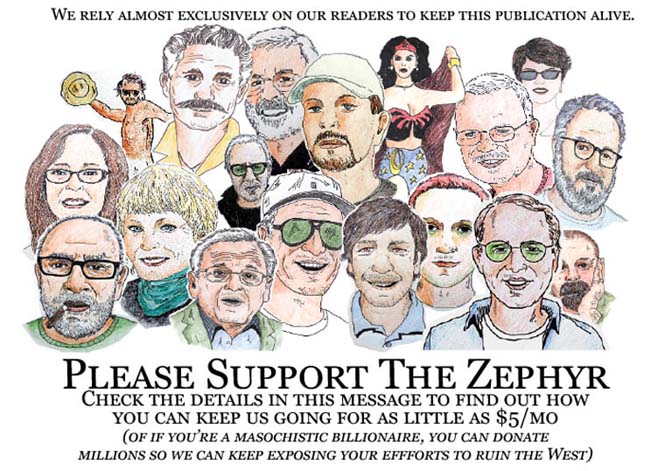
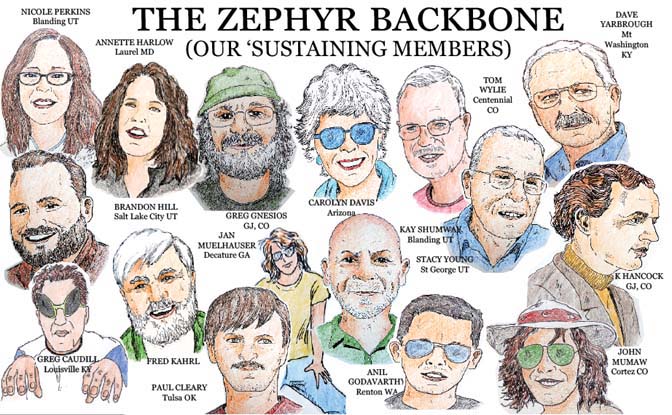
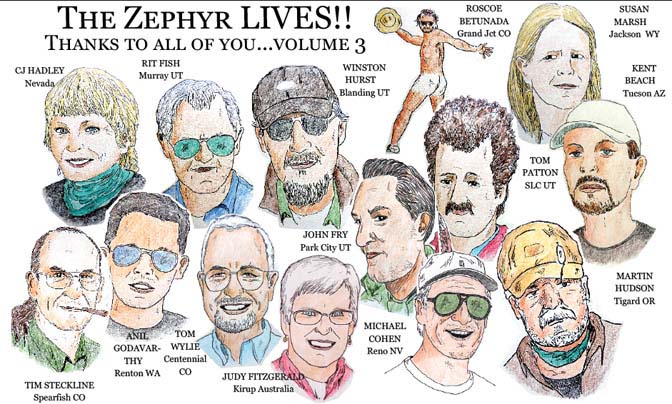
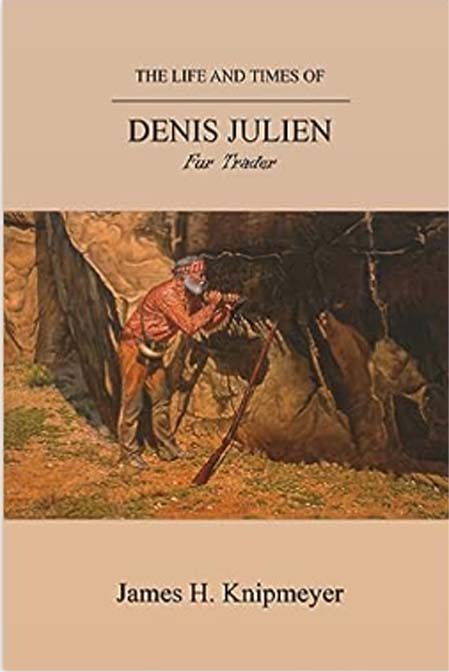
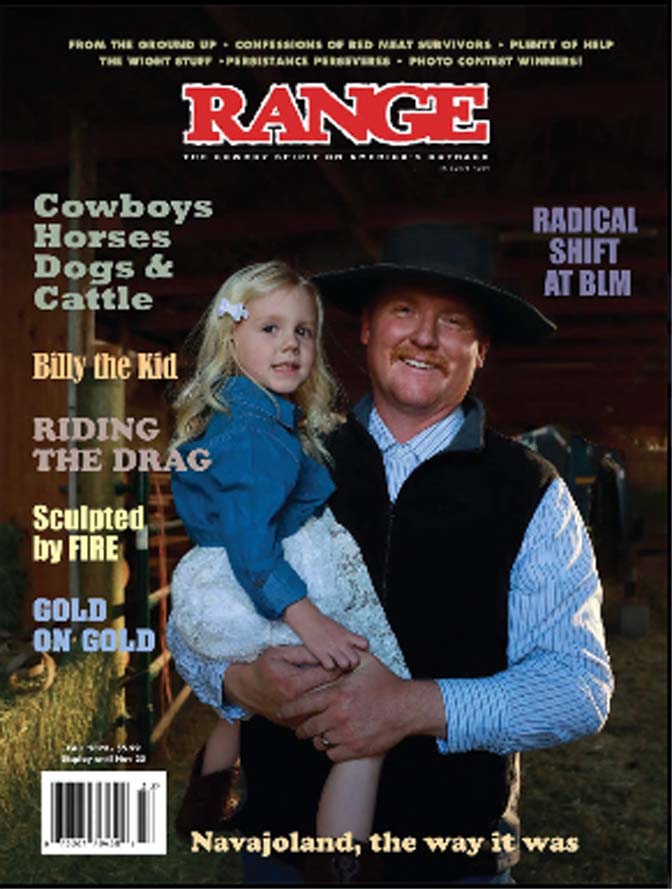

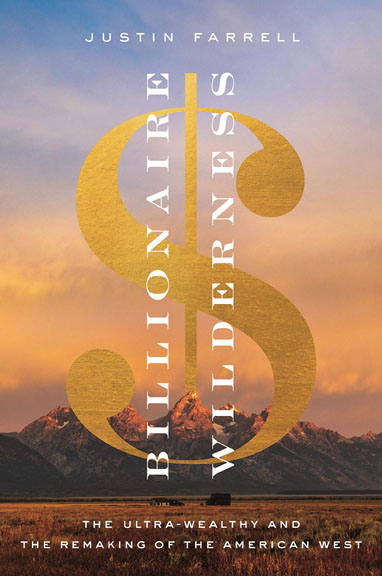


I don’t know if it was a mistake or what, but the caption for the first photo in this article is Mountain Bike tracks above the Sand Flats, Moab 1992. Mountain bike tracks? Those must have been REALLY big mtn. bikes because those look like OHV tracks to me.
I know minor point maybe, buy hey I’m a photographer I notice stuff like that.
Thanks Jim! Another great article that I’ll be sharing around.
What do I think? There were alot of expensive vehicles at conference. Mostly Jeep types. We’ve owned them and their gas mileage is pretty low. Reminds me of the government jerk who wants to be the face of conservation, yet flies here and there on one of the two huge planes he owns! Plus has several homes, none run by solar power——which by the way, speaking of the “windmills”, kill eagles and owls indiscriminately!! No one mentions that to build these monstrosities (which incidentally become useless and scrap metal with age!) roads must be graded, huge cement trucks used to built their bases. Coyotes, turtles, raccoons, foxes, rabbits all lost their homes. If there is $25 million in their coffers why doesn’t some of that money get used to clean brush or downed trees to prevent some of the terrible forest fires we’re seeing? And if NUWA has that kind of a bankroll, what about the other “conservation” organizations?? And did anyone mention that the lens for many of the widespread solar farms, are made in China? In one area in NV even the Chinese workers were sent with them to help their installation.
Thanks Donna. I completely agree. Nowadays the mainstream environmentalists are so heavily funded by these billionaire benefactors that they can afford to hire a rash of lawyers to oppose any project they think will be damaging to the land, and drag out the process until the project collapses under the cost. It’s happening right now. Enviros love renewable energy but will employ these same tactics to mine the rare earth elements needed to make electric cars work and a fossil free power grid. Utterly ridiculous.
Can’t wait to share this when you post it. We all need to be reminded of the sell out of wilderness by these sycophants. And they’ve gotten even more sophisticated since 1998. Now they use (abuse?) and co-opt any feel good group they can find. They have co-opted most of the big hunting and fishing organizations like Backcountry Hunters and Anglers. What they don’t tell them is that as soon as they’ve helped them shut down access to an area, they’ll drop them like a hot potato and fight many of the normal means of access hunters rely on, which quite often involves motorized vehicles.
They then turned their attention to Native Americans to help sell National Monuments, lying to them and letting them believe they would actually have management responsibilities, and letting some even think they were fighting to return the land to the tribes.
Then in the last five years or so, they hatched another scheme and spun off a subsidiary organization called Rural Utah Project to scour the Navajo reservation and register every Native American they could find in the most remote reaches, using Google technology to help provide the addresses necessary to register to vote. After doing this they found two puppet native Americans they could use and ran them as San Juan county commissioners. Surprise, they won with all their newly registered native Americans. Genius actually, who is going to argue that every citizen shouldn’t be registered to vote and to exercise that right.
But then last fall, leading up to the 2022 elections, the cat was let out of the bag. Hundreds of emails were released as the result of a Government Records and Management Act request for communication between SUWA and the two San Juan county commissioners. One of the puppet commissioners inadvertently released emails from SUWA to his personal email account! It was astonishing! Mind numbing! SUWA and their attorneys were literally telling these commissioners how to vote, drafting resolutions for them to submit pulling the county out of lawsuits against the Bears Ears designation, and coaching them on how to override the lone conservative member of that county commission on anything he tried to do to help all of the citizens of San Juan county.
The blowback was palpable and swift. They could no longer deny or hide what they had done. It was all there, in black and white. The two puppet commissioners were soundly defeated at the ballot box. And it helped swing 2 of the 3 open commission seats in Grand County, where it was shown SUWA already had their tentacles deeply embedded in Grand County government. And many native Americans woke up to the fact that they had simply let themselves be used, once again, by a group of elitist white environmentalists.
Like you, I understand the value of certain of our lands being set aside for wilderness from a moral and ethical need, to save and set aside some former values of a bygone era. Most conservatives have no problem with this concept, it’s just that SUWA and their ilk would shut down ALL of it if they could, to be used as their own elite playground with all the latest and greatest outdoor products from Patagonia and REI and the like.
But after having a front row seat to this debate and public land fights for the past 45 years, and watching SUWA and their ilk lying and cheating and propagandizing the whole concept, it’s time for us all to rise up and cast them out of the rural west!
Thank you Stiles for updating all those story’s you wrote 25 and 30 years ago telling people how utterly hypocritical and phony these environmental organizations had become! Now help us true rural westerners and protectors of our lands drive the final stake through their crooked elitist souls!
I have personally endured the wrath of the mainstream environmental activists. When I proposed an alternate way of protecting Bears Ears, without taking the Monument route, I was labeled a racist, even by some of my old green pals. The lengths they went to discredit and marginalize The Zephyr still pains me. One of these days, I hope to write the whole story of how The Zephyr was targeted for destruction.
Thanks for the read. I taught school on the Navajo Reservation in the southern parts of San Juan County, currently living in Duluth, MN. I am interested in the ideas on consumption and production. Often, I wonder what the biggest threat to wilderness is and how best to protect it. The boom in eco-tourism might be much more impactful than an oil well. I start to think we all need to live simply like the old grandmas in their hogans, but then again, I would not want to empower any government to be an authority on how we can choose to live.
On the question Jim poses after his “time to look in the mirror” Zephyr issue in 2001, the question being “what the hell happened?”, maybe a few historical markers might help shed some light. By the way, I didn’t have any idea of the academic debate while it was occurring. It wasn’t until after I read Brave New West in 2007, that I started researching “the wilderness debate”. Of course, our Native Americans and Third World critics began their work soon after Columbus, but we white folks apparently didn’t catch on until about the late 1980’s and early 1990’s.
When Ed Abbey wrote that “the idea of wilderness needs no defense, only more defenders”, he was obviously aware of the debate and thus forced into a statement he lived to regret. In 1988, Abbey engaged Wendell Berry in a published debate that was republished 22 years later here in the Zephyr. And much more famously, The New York Times published William Cronon’s The Trouble with Wilderness essay, likely not long after it was written in 1995.
So my theory is simply this: by 1998, the intellectual defenders of wilderness knew their core concept, the idea of wilderness as defined in law by the United States of America, was now formally demolished. This article chronicles what they decided to do. The rest is history.
My wandering amigo warned me of what to expect with the monumentization of Cedar Mesa and he was spot on. And those flat plastic bombproof WSA signs as shown in a photo above seem to say “tread on me” to every ATV that sees them. Man is an invasive species and there’s too many of us.
(sigh). as mr. patton concluded: “too many of us”. THAT doesn’t seem likely to un-happen, unless …
Where to begin?
Back in 2000 I fell on my sword in order to tell people that Arizona State Parks’ development scheme for Kartchner Caverns wasn’t meant to protect the cave. In retrospect: “duh.” That shouldn’t have come as a surprise to me or anyone else. It might have affected the eventual operating schedule of the park, but once the memory of the incident is fully erased, the business of revenue enhancement will surely prevail.
The only way to keep wilderness wild is to not go there. Ever. Period. As soon as anyone is allowed in there (or is it allowed out of here?), everyone must be. Or at least, everyone who can afford to make the trip; but that’s another issue.
When enough people want to be somewhere, the place must be modified to accommodate them. Once a lot of people are coming, the place will necessarily change because they are present. Even footprints accumulate. Back when I was studying outdoor recreation, one fashionable management framework being discussed was LAC, “Limits of Acceptable Change.” It was a fine academic ideal, except for the part about enforcing the limits.
Everything, real or imagined, is for sale. Selling wilderness like a car is perfectly apt, because personal access to scenery has always been a selling point for American cars. We might also paraphrase Maslow’s maxim “When the only tool you have is [desirability], you tend to see every problem as a [price tag].” It’s useful to remember that people are animals, motivated by appetites and instincts. Deciding to become influential using standard, proven means expresses that animality. Deciding not to do so removes one from the human-animal game just as effectively as deciding not to reproduce removes one from the human-animal gene pool. Thus, any apparent transcendence of animality is a short-lived, local, ultimately ineffectual phenomenon.
As some boys from Akron once put it: https://www.youtube.com/watch?v=56u6g0POvo0
Spot on, Matt. And That’s why that conference was such a seminal moment. Environmentalists decided they could pursue massive amounts of cash to fund their cause (and boost their own salaries) and still convince themselves that they held the moral high ground. It was a lie but most of the mainstream media ate it up.
I forgot to ask… how goes the Tamarisk Wars?
Great article, Jim. There’s another side of this a lot of people don’t see yet. It’s not just the tourism/recreation industry messing things up. There’s an overlooked dark side to shutting down mines, drilling, and power plants as well. Whole areas of the West are being economically wiped out. Here in Utah’s Carbon County, the population in 2020 was 20% less than it was in 1950. That means a lot of relatively cheap real-estate is now available, and non-resident high-rollers are scooping it up. The latest big thing is water. It doesn’t rain here, and reservoir water is sold by shares. Speculators are buying family farms just for the water shares, which effectively leaves the land barren and almost worthless. The speculators are betting they can turn a good profit by selling the water back to the government when Lake Mead and Lake Powell reach critically low levels. I suspect there might be a hidden agenda at work in this case as well.
Thank you Jim. I hope you are well.
What a case of “be careful what you wish for”… in this case, I guess “they” got what they wanted. A whole lotta money which buys “them” the means to escape the hurly burly of the hoi-polloi. The rest of us, swimming in the hurly burly, just gotta buy permits to visit “our” public properties. Mr. Patton got it right–there’s too many homo-sapiens on the face of this old rock.
That photo of a ‘rash of mountainbikers’ was actually from an annual race that sadly ended with the death of a competitor struck by an oncoming vehicle’s side mirror. Several riders went down (I missed the impact by half a minute). I stopped to help stabilize one of the riders who was unconscious and badly broken. An hour later we loaded the injured onto a helicopter headed to GJ and the deceased onto an ambulance headed to his grave.
That was the last of those races in Moab and the beginning of the end of my ‘Moab Migrations’ every spring. Now when I pass through (rarely) I don’t stop. It seems that ‘Brave New West’ was prophetic after all.
Maybe we need less talk and more action!
No one seems to comment on population pressures. Everyone loves a beautiful place, right? Loved to death, Or the negative impacts of social media posts and “bucket lists”…whenever I read an environmentalist’s bio and note the number of children they have, I realize that they don’t have a clue about consumption.
Fighting a newer battle – not wilderness but change from National Forests to National Park/Climate Preserves, this new movement is using the same tactics, just different focus. Definitely a few believing they are superior when actually their lacking in own self’s causing them the need to take “control” of other things.
I deeply appreciate Jim’s articles and admire his ability to put feelings to words. I have seen the changes he describes in my own life and feel that declaring monuments brings destruction of the very cultural resources they pretend to save.
Good job Jim. I loved the article, but I’m not surprised. There is another dark side to the wilderness issue that most people haven’t noticed yet. Often, when mining, drilling and power plants are shut down, whole areas of the country are economically devastated. Here in Carbon County, Utah, the effects of this are severe. The population of the county in 2020 was 20% less than it was in 1950. As families move out, a lot of relatively inexpensive real-estate becomes available, And, an added element is that water is becoming a major commodity. It doesn’t rain here, and reservoir water is sold by the share. The value of a share of reservoir water has almost doubled recently. Since the prolonged drought these past few years, speculators are buying up family farms just for the water shares, expecting to make a good profit by selling or leasing the shares to government in a few years to help save Lake Powell and Lake Mead. Without water, the ground is rendered almost worthless. I suspect, that like the “secret selling of wilderness agenda.” there might be a similar dark agenda at work making money on these economically ruined areas and the people who live there. .
THIS IS A COMMENT BY TOM McCOURT…sent via Jim Stiles
Great article Jim. And I’m not surprised you were betrayed by people you
thought were your friends. It happens a lot nowadays. And, there’s
another thing happening concerning the environmental agenda that a lot
of people haven’t realized yet. When power plants, mines, and drilling
are shut down, for whatever reason, whole areas of the West are
economically devastated. There is a ripple effect that effects the whole
society. Here in Carbon County, Utah, the population in 2020 was 20%
less than in 1950. When that happens, a lot of relatively cheap
real-estate is made available. And, the latest big thing is water. It
doesn’t rain here, and with the prolonged droughts we’ve been
experiencing, the price of reservoir water shares has more than doubled
in just a few years. I’ve heard stories that out-of-area speculators are
buying up family farms just for the water shares, which renders the land
almost worthless. The speculators are hoping to make a good profit by
selling or leasing the water to the federal government soon to help save
Lake Powell and Lake Mead. I don’t know for sure, but I wouldn’t be
surprised if there isn’t another dark agenda at work here.
Tom McCourt
“Environmentalism is the religion of choice for the modern, urban atheist.”
– Prof. Joel Kotkin, Chapman Univ.
It’s amazing how lilly white the enviro hoe-down photos are, scions of the right families who went to the right schools and colleges. They didn’t get near the kids who came from the wrong families over on the wrong side of the tracks, who went to the wrong schools on the wrong side of town, the schools where few graduate or read at grade level, and even fewer ever get near higher education. They used to have a UMW future in the Carbon/Emery county coal mines, at the smelter in Magna, or down in the copper pit. Now, their kids live in cardboard boxes beneath the SLC sixth north overpass and in shipping containers sprawled across the desert down south. They’re 21st century Joads. The Enviro-elite can’t give a rat’s ass about anyone but themselves. They’ve been told how special they are ever since they were taken on “play dates.”
The Ownership Caste larva aren’t that good at politics, even with a bottomless barrel of money. They just took a gawd-awful ass kicking from Mike Lee, whom they had targeted. Federal Heights/Park City lost the class war with the west valley and rural Utah. The owners of the two parties, with Mitt Romney coordinating, conspired to run a CIA/BYU/ruling caste stooge as fake independent against Mike, while the Democrats declined to run a Senate candidate for the first time since statehood, forever to their shame. This fooled absolutely no one that they needed to fool and Lee rolled up 60% of the vote. Mitt and Evan tried to shiv Mike and missed, now they’re both on their way out. The Utah Democratic party has elected exactly one candidate to a statewide office in 40 years…go figure.
Say what you will about the Utah Old Right, six years ago Mike Lee ran the prophet’s grandson(Bob Bennett/Heber Grant) out of the renomination for his own Senate seat at the state convention. Bennett couldn’t even get the votes to take it to a primary. The church leadership handed Mitt his nomination six years ago as payment for a debt they incurred in 1968 with his father. George had been seriously challenging Nixon in the primaries. They asked him to end his presidential campaign and he listened to “good counsel.” George was born into a polygamous family in Mexico in 1917 and the church didn’t want it to become a public discussion. Orrin Hatch retired and the church made good on their debt to the Romneys with Mitt’s nomination. Normally, with all of his millions and Temple Square backing, he’d be in office for life, but none of it could save him now. There are way more votes west of State street than up on the benches. You’d think a bunch of rich white kids could count better.